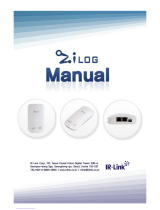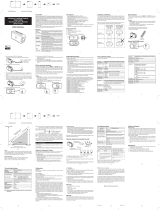
ZTP Network Security Plug-In (SSL)
QS005906-1211 Page 3 of 13
In addition, this package requires all cables, power supplies, and emulator hardware
supplied with one of the supported development platforms. For information on setting up
the ZDS II development kit hardware, refer to eZ80Acclaim!
®
Development Kits Quick
Start Guide (QS0020).
Target Software Requirements
The target system must be running ZTP v2.2.0 to ensure
compatibility with this package.
It is necessary to rebuild the existing ZTP application with SSL components included in
this package to enable secure communications.
For information on Host Machine Hardware and Software requirements, refer to System
Requirements and Pre-requisites section in Zilog TCP/IP Software Suite Quick Start Guide
(QS0049).
Installing the ZTP Network Security Plug-In (SSL)
Before installing ZTP Network Security Plug-In (SSL), ensure that ZTP v2.2.0 is installed
on the host PC. The default folder for various ZTP installation are as follows:
• Object code of ZTP v2.2.0—C:\Program Files\Zilog\ZTP_2.2.0_Lib_ZDS
• Source code of ZTP v2.2.0—C:\Program Files\Zilog\ZTP_2.2.0_Src_ZDS
Follow the steps below to install the ZTP Network Security Plug-In (SSL):
1. Insert the CD containing ZTP Network Security Plug-In (SSL) software in your PC. If
the setup program does not start automatically, use Windows Explorer to browse the
contents of the CD and then double click on either the
ZTP_SSL_v2.2.0_US.exe or
ZTP_SSL_v2.2.0_INT.exe setup program available in the root directory and follow
the instructions.
Only one of these setup programs is present on the CD depending on whether
the US or International version of the ZTP Network Security Plug-In (SSL)
software is purchased. If the CD does not contain the updated version of the
SSL package, contact Zilog Customer Support.
2. When the installation program starts executing, it prompts you to accept or decline the
license agreement. To complete the installation, accept the terms of the license
agreement.
3. Enter a user name and serial number. The user name is optional and arbitrary, but enter
a valid serial number to unlock the installation CD.















